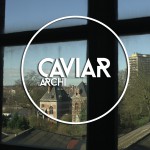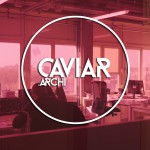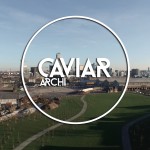What is sustainable urbanism in the Brussels-Capital Region, and more generally?
Alexander D’Hooghe, Marcel Smet from ORG2 consultants, and Guillaume Van Der Vaeren from JNC International consultants, try to answer this question.
an initiative of Brussels Invest & Export
with the support of Cécile Jodogne, State Secretary in charge of Foreign Trade
in collaboration with ecobuild.brussels
Project name : BRUSSELS BUILDS GREENER : Sustainable urban planning
Address : Brussels – Belgium
Names of speakers : Alexander D’Hooghe (ORG2 / Founding Partner) – Guillaume van der Vaeren (JNC International / Urban Designer) – Marcel Smets (ORG2 / Senior Partner)
Technical sheet of this architecture video clip
Journalist : Emma C. Dessouroux
Cameraman : Emanuel Pinto / Epiprod ; Didier Minne – Geoffroy Minne / Kinodoc – Julien Stroïnovsky / Novsky Films
Editing : Emma C. Dessouroux / Emanuel Pinto / Cristina Dias
Direction : Emma C. Dessouroux
Production : Les Délires Productions
Translation : MDR Translations
Substitles : Nicolas Gilson
Original transcription
Duurzame stedenbouw geven wij ondermeer een invulling als werkende met het principe veerkracht. Veerkracht of in het engels: “Recillience” is de capaciteit van een stadswijk of van een stadsdeel van een stedelijk infrastructuur om om te gaan met snelle en onvoorspelbare veranderingen, met shocks, met crisis en met een onvoorspelbare toekomst.
Une des grandes problématiques est de voir intégrer ces projets dans le contexte qui soit urbain ou paysager. Et ça c’est un travail sur les continuités paysagères, sur les liens urbains qui va vraiment permettre de fondre ce nouveau quartier dans son contexte et de l’assimiler, de le faire accepter par le contexte dans lequel il va être intégré.
Ik denk dat Brussel, zoals vele steden, eigenlijk zich bewust wordt van het feit dat een stedelijke politiek erg belangrijk is en dat men een beleid niet kan onderverdelen in sectoren maar dat men dat gezamelijk moeten aanpakken. En dat merk je in Brussel onder andere met de aanwezigheid van de brusselse bouwmeester bijvoorbeeld. Dat er toch echt een behoefte is om vernieuwend om te gaan met de eigen omgeving. Stedenbouw die zijn naam waardig is, heeft altijd een soort duurzaamheid beoogt.
En tant que bureau d’étude, avant le mot clé était multidisciplinarité. Donc cette idée de pouvoir en interne développer toute une série de compétences. Je pense que l’on a évolué vers une transdisciplinarité. Ça veut que dire que l’on travaille de plus en plus dans des réseaux de compétences où chaque projet, qui est à chaque fois un projet urbain sur mesure, va se développer dans une équipe de maîtrise d’œuvre qui va s’associer de façon à répondre spécifiquement à l’ensemble des enjeux d’un site avec des spécificités parfois très variées en termes de gestion des eaux, en termes d’intégration, de la biodiversité, de la faune, de la flore, intégration sociale, intégration culturelle. C’est un ensemble de partenaires qui vont se mettre ensemble pour répondre à ces projets.
Het cooperatieve in het project is toch wel sterk toegenomen. Ik denk ook dat de hele nadruk op multimodaliteit verlegt is. Er is één ding wat ons bijzonder dierbaar is: en dat is het idee van flexibiliteit naar de toekomst, van kwaliteiten vast te leggen maar nooit meer vast te leggen dan nodig is, zodanig dat je opportuniteiten kunt openhouden. En dat je een kader maakt dat voldoende garandeert dat je omgeving zal werken en zal mooi zijn maar dat je daarnaast toelaat dat men inpikt op datgene dat zich voordoet als verandering.
Il y a deux raisons pour lesquelles nos bureaux sont très très bien vus à l’international : c’est d’abord l’aspect de transdisciplinarité, cette capacité de travailler dans des équipes transdisciplinaires et complémentaires. L’autre aspect est l’intérêt pour l’être humain de toujours remettre cette dimension humaine au cœur du projet.
Ondertussen drie jaar geleden, zijn we begonnen met een project net buiten Manhatten, buiten New York, in New Jersey. Het werk daar is erop gericht geweest om een aantal infrastructuren te ontwerpen die A snel kunnen gebouwd worden maar B, heel belangrijk, die niet monofunctioneel zijn. U vraagt wat is duurzame stedenbouw; een stuk infrastructuur dat op 4/5 verschillende niveaus dienst kan doen en als voor waterhuishouding, en voor mobilteit en als publieke ruimte, als recreatieve ruimte en als kans om nieuwe stadsontwikkelingen vastgoedontwikkelingen aan vast te rijgen. Met 1 investering, 5 keer hitten.
Stedenbouw is een internationale bezigheid. En de stad is niet alleen in belgie, de stad is overal en wij kunnen leren van de cases waarmee we bezig zijn. En ik denk dat als we niet bezig zijn met nauwkeurig ook in het buitenland te werken we ook niet goed in ons eigen land kunnen werken. En dus is het essentieel van zich te exporteren en internationaal bezig te zijn.
English subtitles
Our interpretation of sustainable urban development is working on the basis of resilience.
Resilience is the capability of an urban neighbourhood or a part of an urban infrastructure to deal with fast and unpredictable changes, with shocks, with crises and with an unknowable future.One of the biggest problems is how to integrate all of these projects into an urban or rural environment.
And that means work on rural continuities, on urban connections which are really going to help this new neighbourhood to merge into its environment.
And for it to be accepted by the environment into which it is going to be integrated.I think Brussels, like many other cities, is actually starting to realise that urban politics are very important, and that a policy cannot be divided into sectors but needs to be approached holistically.
And in Brussels this shows, for instance, in the fact there is a “chief architect”.
There is a need for innovation in the local environment.
Urban development worthy of its name has always envisaged sustainability.As consultants, the key word used to be multidisciplinary.
So this idea of being able to develop internally a whole range of competences.
I think that we have evolved now to a transdisciplinary situation.
This means that we work more and more in networks of competences, where every one of our customised urban projects is going to be developed in a project management team who will be working with each other to deal with the whole range of challenges that can arise on a site.
Specific issues can sometimes be very varied, in terms of water management, integration, biodiversity, fauna and flora, social and cultural integration.
So it’s a group of partners who are getting together to deliver such projects.The cooperative aspect of this project has indeed increased.
I also think that the emphasis has moved to multimodality.
One thing is very precious to us: this is the idea of flexibility for the future;
Of fixing quality standards, but never more than necessary, so there is still room for opportunities.
And that you can build a framework that gives you enough of a guarantee that your environment will work, and be beautiful, but that also leaves enough room to deal with change, should it present itself.There are two reasons why our consultants are so well regarded internationally:
Firstly, there is this ability to work in transdisciplinary and complementary teams.
And secondly there is this interest in the human being, in always placing this human dimension at the heart of the project.In the meantime, three years ago we started on a project just outside Manhattan, outside New York, in New Jersey.
The focus of this construction was on designing a number of infrastructures that firstly can be built quickly but secondly, and very importantly, are not monofunctional.
You may ask what sustainable urban development is.
It is a part of the infrastructure that can be used on four or five different levels:
For water management, for mobility, as public space, as recreational space and as an opportunity for new urban and property developments. One investment, five results.Urban construction is an international activity.
The city is not just in Belgium, it is everywhere, and we can learn from the cases we are working on.
And I think that if we are not working meticulously abroad, then we can’t work meticulously in our own country.
So it is essential to export yourself and work internationally.
French subtitles
L’interprétation que nous donnons à l’urbanisme durable est en partie basé sur la ‘résilience’. La résilience est la capacité d’un quartier ou d’une partie de ville à s’adapter à des changements rapides et imprévus, à des chocs, des crises et un avenir non prévisible.
Une des grandes problématiques est de voir intégrer ces projets dans le contexte qui soit urbain ou paysagé. Et ça c’est un travail sur les continuités paysagères, sur les liens urbains qui vont vraiment permettre de fondre ce nouveau quartier dans son contexte et de l’assimiler, de le faire accepter par le contexte dans lequel il va être intégré.
Je pense que, comme beaucoup de villes, Bruxelles prend conscience de l’importance d’une politique urbaine, une politique qu’on ne peut pas subdiviser en secteurs mais qu’il faut soutenir tous ensemble. Cela se traduit à Bruxelles par exemple par la présence d’un maître d’œuvre bruxellois. Il y a vraiment un besoin de se montrer innovant dans son propre environnement local. Tout urbanisme digne de ce nom a toujours visé une forme de durabilité.
En que bureau d’étude, avant le mot clé était multidisciplinarité. Donc cette idée de pouvoir en interne développer toute une série de compétences. Je pense que l’on a évolué vers une transdisciplinarité. Ça veut que dire que l’on travaille de plus en plus dans des réseaux de compétences où chaque projet, qui est à chaque fois un projet urbain sur mesure, va se développer dans une équipe de maîtrise d’œuvre qui va s’associer de façon à répondre spécifiquement à l’ensemble des enjeux d’un site avec des spécificités parfois très variées en terme de gestion des eaux, en terme d’intégration, de la biodiversité, de la faune, de la flore, intégration sociale, intégration culturelle. C’est un ensemble de partenaires qui vont se mettre ensemble pour répondre à ces projets.
L’aspect coopératif dans un projet a fortement augmenté. Je pense aussi que l’accent s’est déplacé sur le ‘multimodal’. Une chose nous tient énormément à cœur, c’est l’idée de flexibilité pour l’avenir, de fixer des normes de qualité mais jamais plus que nécessaire, de manière à pouvoir rester ouvert aux opportunités. Et de créer un cadre garantissant à suffisance que l’environnement fonctionnera et sera beau tout en permettant de rebondir sur les changements qui pourraient se présenter.
Il y a deux raisons pour lesquelles nos bureaux sont très très bien vus à l’international : c’est d’abord l’aspect de transdisciplinarité, cette capacité de travailler dans des équipes transdisciplinaires et complémentaires. L’autre aspect est l’intérêt pour l’être humain de toujours remettre cette dimension humaine au cœur du projet.
Il y a trois ans, nous avons entamé un projet juste à l’extérieur de Manhattan, de New York, dans le New Jersey. Il consiste à concevoir des infrastructures qui, pour commencer, peuvent être construites rapidement, et qui deuxièmement ne soient pas ‘monofonctionnelles’. Vous vous demandez : qu’est-ce que l’urbanisme durable ? C’est une infrastructure qui peut servir à 4 ou 5 niveaux différents, par exemple pour la gestion de l’eau, pour la mobilité, comme espace public ou de loisirs, et comme une opportunité d’y adjoindre de nouveaux projets immobiliers urbains. Un seul investissement, cinq résultats.
L’urbanisme est une préoccupation dans le monde entier. La ville n’est pas qu’une ville belge, la ville est partout et nous pouvons tirer les enseignements de cas sur lesquels nous travaillons. Et je pense que si nous ne travaillions pas de façon soignée à l’étranger, nous ne saurions pas non plus travailler de façon soignée en Belgique. Il est donc essentiel de s’exporter et d’être actif à l’international.








Laisser un commentaire